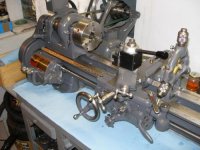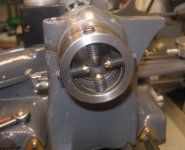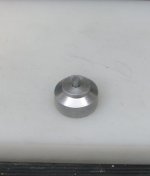Boyd Allen
Active member
Here is a link to a thread with pictures and other information. http://benchrest.com/showthread.php?91876-pics-of-my-first-benchrest-build-in-progress/page2 It is not the same as a steady rest. A steady rest requires that the OD that the steady rest runs on be concentric with the desired CL of the work, in the case of a barrel, the bore. A mid bed half headstock is dialed in like a right side spider on the main headstock. The OD does not have to be concentric with the CL... significant difference. Years ago, Chet Whitebread built the first one that I heard of, for his 9" SB, before he got his heavy 10. He found a headstock, cut it in half and made the rest of the pieces. I thought that it was clever then, and I still do now. Once you have one, if your bed is long enough, a lathe with a long headstock is no longer at any real disadvantage for barrel work. If you bore out the spindle, or scratch build one, you can use a lathe that would normally be limited to barreling with a steady rest, dialing it in like one would through the headstock.





